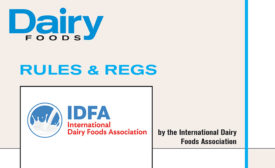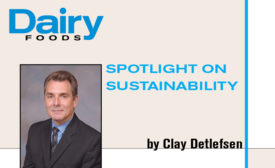Dairy Foods Columnists
A look into daily snack patterns offers insight for dairy manufacturers to tap into what consumers are looking for with their snacks.
Read More
Pick whole fruits for use in dairy foods and beverages
Use whole fruits in dairy products to appeal to consumers and to make ‘no added sugar’ claims.
March 7, 2017
Crisis preparedness demands supplier-customer cooperation
It is essential to establish a crisis preparedness plan with supply chain partners before any crisis event takes place. Here are some critical guidelines to follow.
March 6, 2017
Online training modules for hygienic design provide practical knowledge
3-A SSI introduced three new hygienic equipment design e-learning modules available for free.
February 14, 2017
Promoting the protein content of yogurt, cottage cheese
Consumers’ awareness of how much protein they need daily is low. For dairy marketers, here’s an opportunity to promote the protein content of yogurt, cottage cheese and cultured beverages.
February 8, 2017
How to approach the call for a clean label
Certain ingredients allow ice cream to travel farther and recover from heat shock. But that doesn’t matter to the label-reading consumer. Here are some strategies for ice cream manufacturers to deliver a cleaner label.
February 7, 2017
Canada is up to no good with its trade policies
Canada is one of our top trading partners, but its flouting of its trade obligations is simply unacceptable. IDFA insists on fair treatment and immediate action by the U.S. government.
February 6, 2017
Water Quality Trading is a win-win solution
The EPA notes that nutrient-recovery technologies provide palpable and verifiable nutrient reductions, which can allow for the elimination of the uncertainty ratios.
January 11, 2017
These keys can open the doors to FSMA’s kingdom
Some free training material is helpful yet confusing. So you will need to do additional editing and fine-tuning to create documents that comply with regulatory requirements.
January 10, 2017
Understanding the basics: Techniques to attain a high cheese yield
To attain a high cheese yield, cheesemakers need to retain as much casein, fat and moisture as possible. Here are some techniques.
January 9, 2017
Stay ahead of the curve. Unlock a dose of cutting-edge insights.
Receive our premium content directly to your inbox.
SIGN-UP TODAYCopyright ©2025. All Rights Reserved BNP Media.
Design, CMS, Hosting & Web Development :: ePublishing

















